Review: 2012 Chevrolet Cruze ECO
With the Cruze, Chevrolet has pulled off a rare combination: segment-leading sales (up 31 percent from last year) at a higher transaction price (up 27 percent from two years ago to $20,465, according to TrueCar). But it hasn’t hurt that the Corolla, Civic, Focus, and Elantra have all been supply constrained. Once competitors get their factories running, does the Cruze have what it takes to maintain its current lead?
A Cruze LTZ is an attractive car, if conservatively styled. When I first saw one in the metal I briefly mistook it for an Audi. But substitute the ECO’s 17-inch forged polished alloy wheels for the LTZ’s five-spoke 18s and…well, what do you think? A forged polished wheel isn’t cheap. It takes a special talent to make one look like a cheap hubcap. I would not have mistaken the bulbous ECO for an Audi.
When both cars are comparably equipped, a C-segment Cruze lists for about $2,000 more than the new B-segment Sonic. That $2,000 pays for a car that’s about eight inches longer and a quarter-ton heavier, but the extra metal in a Cruze doesn’t cost GM more than a few hundred dollars. So, GM didn’t have to pinch its pennies nearly so hard with the Cruze, and this is most clearly evident inside the car, where pretty much everything looks and feels solid, and nothing suggests that you only bought the car because you couldn’t afford a better one. While the Cruze’s styling could hardly be more conventional—you won’t find anything like the Sonic’s instruments here—it does include one aesthetic innovation: heavy-weave cloth upholstery continues from the door panels to the face of the instrument panel. While not as easy to keep clean as plastic (especially in black), it certainly dresses up the place.
When I first reviewed the Cruze last year, I praised it for having separate front and rear seat height adjustments—and on both front seats, no less. I also noted that bean counters have been hunting this feature to extinction. I now fear that my review might have tipped off one on the prowl, for this feature is gone for 2012. Luckily they haven’t attempted to combine the tilt and height adjustments. Given the Cruze’s high cowl and beltline, those of us under six-feet tall must crank the seat up a few clicks to avoid feeling buried in the car, and we don’t necessarily want to also tilt the seat forward. The firm but comfortable driver’s seat continues to feel more substantial than most others in the segment. My glutes detect a healthy helping of top-quality foam. The back seat remains too low to the floor and a bit short on knee room.
The Cruze shares its engines with the Sonic. By driving the latter I learned why the 136-horsepower 1.8-liter four-cylinder engine is not the way to go. Even in the lighter car it feels short on power, deals out much sonic unpleasantness when forced to work, and isn’t stingy with fuel. The 1.4-liter turbocharged four standard in the Cruze is no more powerful at high revs, but has a much plumper midrange, as seen in the peak torque figures: 148 pound-feet from 1,850 rpm rather than 123 at 3,800. What this means: you don’t have to work the 1.4T nearly as hard in typical suburban driving. Though it shakes a bit at idle, the small four is reasonably well-behaved otherwise. Just don’t expect blistering acceleration: 138 horsepower isn’t much for a 3,100-pound car. Like a Toyota Prius, the ECO feels best when driven in an economy-minded fashion—which is of course what this variant with its special “triple overdrive” gearing is all about. The main reason not to do so: the people behind you often seem to be in more of a hurry to get to the next red light. In sixth the small engine is spinning only 2,300 rpm at 75 miles-per-hour. Unlike those in many economy cars, the shifter feels smooth and solid.
And fuel economy? The EPA highway rating of 42 is at the top of the segment, and the city rating of 28 isn’t bad, either. For a number of my suburban drives the trip computer reported low 40s, and in straight highway driving over 50. I averaged a little over 35 for the week. I might wonder how much better it would do if GM had managed to keep the curb weight well under 3,000 pounds, except that the lighter Sonic only manages EPA ratings of 29/ 40 with the same engine. The ECO tweaks appear to make about a ten percent difference in the EPA’s tests. If the trip computer can be trusted, they might make a larger difference with an economy-minded driver in real-world driving. [Update: a Cruze owner informs me that he and others have found the trip computer to be three percent optimistic, so it reads about 1 to 1.5 MPG high.]
Unfortunately, these tweaks also make a difference in how the Cruze ECO handles. The 215/55HR17 Goodyear Assurance tires provide little in the way of grip or crisp steering, lapsing early into a soft, safe slide. The lesson once again: this car is optimized for economy, not hooning. In commuting mode, the Cruze drives very pleasantly, with fairly quick and well-weighted (if numb) steering and a smooth, quiet, thoroughly insulated ride. Body control isn’t as good as in the Ford Focus, with a bit of bobbling about over especially uneven pavement, but is much better than in the Hyundai Elantra.
The list price if you forgo the tested car’s $325 “crystal red metallic tintcoat” paint (which is a waste when paired with the ECO’s wheels anyway): $19,995. A Cruze LT, with EPA ratings of 26/ 38, lists for $770 less. The average driver will earn back the difference in about six years. The higher cost would be more palatable if the ECO’s unique wheels and subtle spoiler substantially improved the appearance of the car, but they don’t.
A Ford Focus SE with Sport and Convenience Packages lists for $20,365, so very close to the ECO. Adjusting for the Cruze’s additional features (most notably a few extra airbags) via TrueDelta’s car price comparison tool widens the gap to about $900 (about $1,300 if you compare the Cruze LT instead).
A Hyundai Elantra GLS with Comfort Package and floormats is much less than the others: $17,300. But adjusting for feature differences narrows the gap to a mere $200. Part of the reason for the huge feature-based price adjustment: opt for a manual transmission, and you can’t get alloy wheels or a Bluetooth connection on the Hyundai. The Hyundai also looks and feels like a less substantial car.
The choice among these three is clear for a driving enthusiast: get the Ford. But hypermilers looking for a comfortable, economical commuter that doesn’t look or feel like a penalty box can’t do much better than the Chevrolet Cruze Eco. While in charge of product development at GM, Bob Lutz put a high priority on refinement, and it shows in this car (much more than in the Sonic). The curb weight took a big hit as a result, punting it nearly into midsize sedan territory, but once the Cruze is doing what its name suggests it does best this seems to have little impact. What’s still missing: as in the Toyotas the Cruze beats at their own game, there’s no sense of occasion, and nothing aside from excellent fuel economy to get excited about.
Chevrolet provided the vehicle, insurance and one tank of gas for this review.
Michael Karesh operates TrueDelta, an online source of automotive pricing and reliability data.
Michael Karesh lives in West Bloomfield, Michigan, with his wife and three children. In 2003 he received a Ph.D. from the University of Chicago. While in Chicago he worked at the National Opinion Research Center, a leader in the field of survey research. For his doctoral thesis, he spent a year-and-a-half inside an automaker studying how and how well it understood consumers when developing new products. While pursuing the degree he taught consumer behavior and product development at Oakland University. Since 1999, he has contributed auto reviews to Epinions, where he is currently one of two people in charge of the autos section. Since earning the degree he has continued to care for his children (school, gymnastics, tae-kwan-do...) and write reviews for Epinions and, more recently, The Truth About Cars while developing TrueDelta, a vehicle reliability and price comparison site.
More by Michael Karesh
Latest Car Reviews
Read moreLatest Product Reviews
Read moreRecent Comments
- Redapple2 jeffbut they dont want to ... their pick up is 4th behind ford/ram, Toyota. GM has the Best engineers in the world. More truck profit than the other 3. Silverado + Sierra+ Tahoe + Yukon sales = 2x ford total @ $15,000 profit per. Tons o $ to invest in the BEST truck. No. They make crap. Garbage. Evil gm Vampire
- Rishabh Ive actually seen the one unit you mentioned, driving around in gurugram once. And thats why i got curious to know more about how many they sold. Seems like i saw the only one!
- Amy I owned this exact car from 16 until 19 (1990 to 1993) I miss this car immensely and am on the search to own it again, although it looks like my search may be in vane. It was affectionatly dubbed, " The Dragon Wagon," and hauled many a teenager around the city of Charlotte, NC. For me, it was dependable and trustworthy. I was able to do much of the maintenance myself until I was struck by lightning and a month later the battery exploded. My parents did have the entire electrical system redone and he was back to new. I hope to find one in the near future and make it my every day driver. I'm a dreamer.
- Jeff Overall I prefer the 59 GM cars to the 58s because of less chrome but I have a new appreciation of the 58 Cadillac Eldorados after reading this series. I use to not like the 58 Eldorados but I now don't mind them. Overall I prefer the 55-57s GMs over most of the 58-60s GMs. For the most part I like the 61 GMs. Chryslers I like the 57 and 58s. Fords I liked the 55 thru 57s but the 58s and 59s not as much with the exception of Mercury which I for the most part like all those. As the 60s progressed the tail fins started to go away and the amount of chrome was reduced. More understated.
- Theflyersfan Nissan could have the best auto lineup of any carmaker (they don't), but until they improve one major issue, the best cars out there won't matter. That is the dealership experience. Year after year in multiple customer service surveys from groups like JD Power and CR, Nissan frequency scrapes the bottom. Personally, I really like the never seen new Z, but after having several truly awful Nissan dealer experiences, my shadow will never darken a Nissan showroom. I'm painting with broad strokes here, but maybe it is so ingrained in their culture to try to take advantage of people who might not be savvy enough in the buying experience that they by default treat everyone like idiots and saps. All of this has to be frustrating to Nissan HQ as they are improving their lineup but their dealers drag them down.




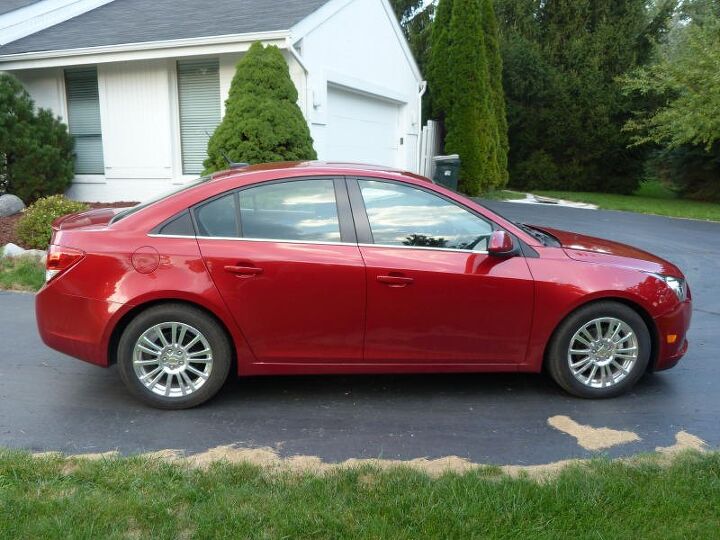

























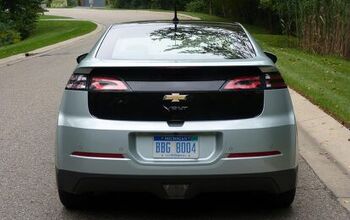
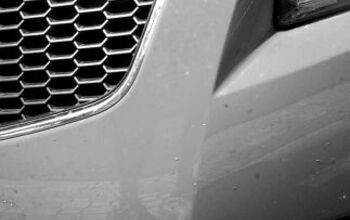
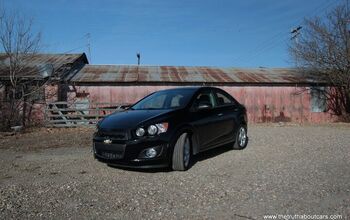
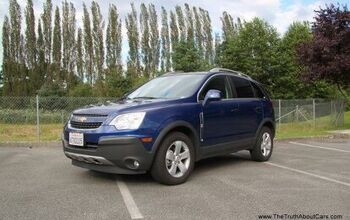











Comments
Join the conversation
Chevy is charging $325 for what looks like same paint that they used on my '98 Intrigue and is the color they use in most Cruze advertisements. Good for them.
When all is said and done it is still a Daewoo. In short it is a second teir Korean car.